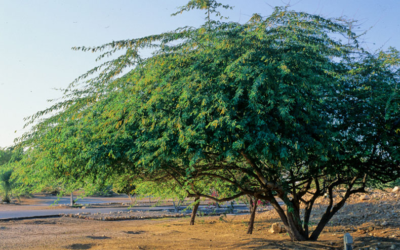Gogunda is a small town (tehsil headquarters), about 35 kilometres from Udaipur city. It has a hilly terrain. The sabzi mandi in Gogunda is vibrant with lots of fresh vegetables and greens. From sugarcane to the nutritious singhada (water chestnut), there is a wide range of variety available. On talking to some of these vendors, I found that most of these are grown locally and are sourced from the neighbouring villages including the areas near Rawach and Morwal – the two villages I have been travelling back and forth to, as AMRIT clinics are located there.

Throughout the journey from Gogunda to these clinics, I see a lot of fields, of makka (corn), gehu (wheat), sarson (mustard) and dhaniya (coriander). I have also noticed greens like Palak, vegetables like brinjal, gourds, tubers and fruits like Papaya and Sitaphal growing here. A lot of young girls on the field collect Sitaphals and trucks carry them to towns. Gourds grow on the roofs in these villages.
However, since my first day here, in both these villages, I saw infants being fed biscuits and Kurkure, children and women having folded plain rotis. From the data, I gathered that the rate of malnutrition among children and women is alarming. The patients of Tuberculosis are extremely undernourished and there’s severe Anaemia among women. It felt paradoxical and so, I wanted to know more about food and nutrition here.
Most people have only two meals a day. They mainly eat rotis, sometimes only rotis. It’s interesting how just ‘Rota/Roti’ is referred as a meal here. Whenever I carry khichdi or Poha for lunch, I’ve been asked several times by different people, “Arey khana nahi khaoge?”. While a meal is seen to be incomplete without roti, it is also important to note that many people eat only rotis, leading to an imbalanced diet.
This is rooted in the lack of availability and affordability of milk, meat, pulses, fruits and vegetables. They often make Raabdi (corn daliya cooked in buttermilk) and eat it with rotis. They also have Khatti chaas (sour buttermilk). When I asked women about using the seasonal vegetables that are available, I realised that they are not aware of its usage. Milk is not affordable for most people. Among the families who own goats or cows, it is mainly seen as a source of income. Additionally, the production of milk goes down seasonally with only dry grass for the cattle and goats to feed on.

These challenges with food availability and affordability are not new in the region. A 2014 study by Aajeevika Bureau showed, “while wheat was available in about 87% of households, fewer households had any oil (74 %) or pulses (44 %), and none had any milk or poultry”. The study also indicated that “almost half the 500 mothers surveyed had not eaten pulses the previous day, a third had not eaten vegetables and almost none had eaten any fruit, egg or meat.”
In a region which has always had inadequate availability of food items, the impact of Covid-19 has also been huge. These are a few statements I have been hearing:
“There were migrants returning from Ahmedabad, Surat, Mumbai. Some had walked miles together and had no cash left with them.”
“Even the nearest ration store is more than 10 kilometres away for many of us and during the lockdown it became impossible to reach them”.
“Even if we could access a store, we could not afford dal, oil, sugar and many other essentials because of the inflated prices.”
The impact of this can be seen significantly on their nutritional status, as recorded in our AMRIT clinics.
Given this context, Amrit clinics have been running a few initiatives which aim at improving the nutritional status among local people. Phulwaris are day care centres where children below the age of five are provided a nurturing environment. Before the pandemic hit us, the Phulwaris followed a daily schedule which included prayer, washing hands, feeding nutritious food, games and activities. Post lockdown, the Phulwaris have continued to provide hot sattu and khichdi through tiffins delivered to homes.
Amrit Ahaar is a food package given to patients suffering from Tuberculosis. It comprises of soya chunks, gram flour, roasted moong whole, semolina and mustard oil. These ingredients are carefully chosen keeping in mind the nutritional requirements of a TB patient, focusing on all aspects like protein, fat, energy, muscle mass, weight and immunity. The patients who receive Amrit Ahaar are also shown recipe videos or given recipe demonstrations using the ingredients given. Many people do not know how to use eggs, suji, besan or soya and therefore, the recipe sharing becomes important and useful.

The patients who are undernourished are counselled at the clinics by health workers, on their eating habits. Events like ‘Swasthya divas’ which happens every month at each clinic, are also a platform to talk about food and nutrition. Through games and activities, we let them know about food groups and balanced diet. These small efforts seem worthy when a patient tries out the recipe demonstrated at the clinic or when a patient gains a few kilos. It reflects in the happiness and contentment of the team of nurses and health workers.
These measures specifically targeting the availability and affordability of food, as well as addressing the awareness on nutrition, are localised solutions to one aspect of food insecurity and malnutrition. It is important to remember that there are many ‘imbalances’ and balancing them would require efforts in more areas through involvement of more stakeholders.
References:




0 Comments